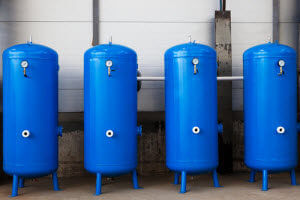Helium Shortage Solved by Extracting from Carbon Dioxide
Last year, Priceonomics.com reported that the US National Helium Reserve would be depleted by 2020. However, Air Products, a world-leading industrial gas company, just filled its 100th helium ISO container at their Doe Canyon Helium plant.
But how can anyone fill 100 containers of helium during the shortage? Read on to find out.
Understanding the Helium Shortage
 Helium is the second most abundant element in the universe. However, most of it exists up in the stars. The earth’s crust does emit some helium, but it’s extremely light and rises into the atmosphere, making it quite difficult to harvest. This is one of the biggest reasons there’s a helium shortage.
Helium is the second most abundant element in the universe. However, most of it exists up in the stars. The earth’s crust does emit some helium, but it’s extremely light and rises into the atmosphere, making it quite difficult to harvest. This is one of the biggest reasons there’s a helium shortage.
Another factor is the increased demand of advanced tools and technologies throughout the years. From MRI machines to cryogenics, helium was a required component for operation for many industries. So as the demands for these technologies grew higher, so did the demand for helium.
Because of these reasons, production couldn’t keep up with demand. Now, the US National Helium Reserve has fewer than 1 billion cubic meters of helium. The amount will be substantial to help with the shortage but only for a short time.
Reversing the Helium Shortage
Today, most of the helium produced comes from processing methane and other natural gases. But some natural gas fields don’t contain helium and many more don’t have enough to extract.
 However, Air Products has introduced a new technology that will revolutionize helium production. Instead of relying on methane, the company uses naturally occurring gas composed mostly of carbon dioxide, which contains high concentrations of helium.
However, Air Products has introduced a new technology that will revolutionize helium production. Instead of relying on methane, the company uses naturally occurring gas composed mostly of carbon dioxide, which contains high concentrations of helium.
According to a recent press release, they use a new technology process to produce pure helium from the carbon dioxide stream. Then they extract the helium from the gas stream. This innovative method provides an economic way to help with reversing the helium shortage.
In fact, they’re predicted to produce up to 230 million cubic feet of helium per year. That’s enough to replace more than 15% of the current BLM reserve helium supply.
In addition to Air Products’ revolutionary technologies, helium plants in Qatar have lead the country to become the world’s largest export and the second largest producer according to Gulf Times. Plus research has just located a helium gas field in Tanzania’s East African Rift Valley. According to the Washington Times, this new discovery could reinflate the supply.
The helium shortage may be a problem for now, but new discoveries, technologies, and plants can help to replenish the supply.
Check out CPV Manufacturing’s blog for more industry news.

